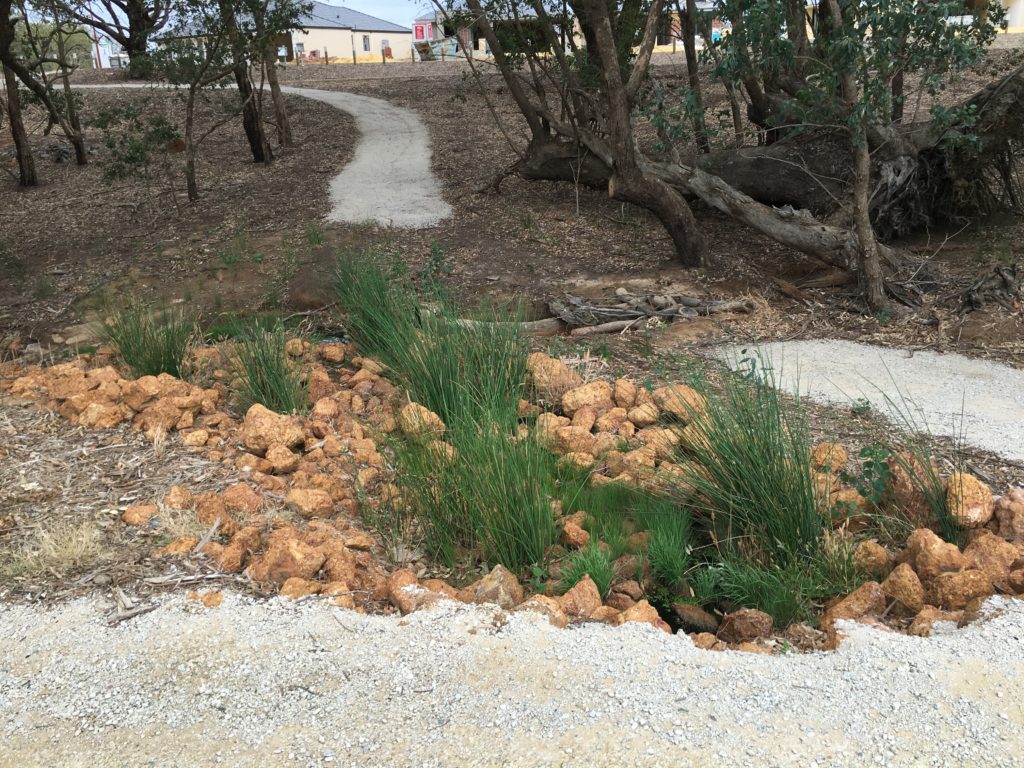
Project Details
The Riverhaven Estate is a unique housing development located beside the Canning River in Martin. The development was project managed by Primewest and has been designed in accord with the site’s natural surrounds. The 10.5 ha development includes 108 residential lots ranging in size from 390 m2 to 803 m2.
WSUD Category: Detention Basin, Litter & sediment trap, Retention of native vegetation, Soakwells
| Criteria | Information |
|---|---|
| Development Type: | Residential |
| Function/Driver: | Water quality |
| Government Area: | City of Gosnells |
| Site Context: | Contamination |
| Year Completed: | 2015 |
The site has historically been used as an equestrian training and agistment facility and was predominately cleared of native vegetation. Three drainage lines existed within the site and a larger drainage channel was located outside the sites south eastern boundary. The Canning River is located along the southern boundary and an unnamed tributary of the Canning River is located along the north western boundary.
All drainage channels conveyed untreated stormwater from the upstream road and semi-rural catchment directly to the Canning River.
In developing the Local Structure Plan for Riverhaven, the Swan River Trust agreed to consider the proposal to allow stormwater infrastructure being located outside the development boundary and in the publicly owned Canning River foreshore reserve, if an improvement in water quality entering the Canning River from inside and outside the development could be demonstrated.
The drainage system design therefore included removing the drainage lines within the site discharging to the Canning River, streamlining the drainage channel located outside the site to the south-east into a living stream and revegetating the Canning River foreshore and Canning River tributary.
In addition, the stormwater management strategy for the Estate was required to incorporate urban water best practice throughout, including the use of bio-filtration swales and the use of native vegetation and soil amendments in drainage basins to encourage at-source infiltration of stormwater and water quality treatment.
Providing drainage infrastructure in the foreshore reserve not only presented an opportunity to improve water quality but also the ecological health of the foreshore area. The net result is an improvement to the overall ecological value of the surrounding foreshore areas relative to the previously degraded status and improved treatment of stormwater prior to entering the Canning River.
Click here to view the full case study New WAter Ways has completed on this site.
